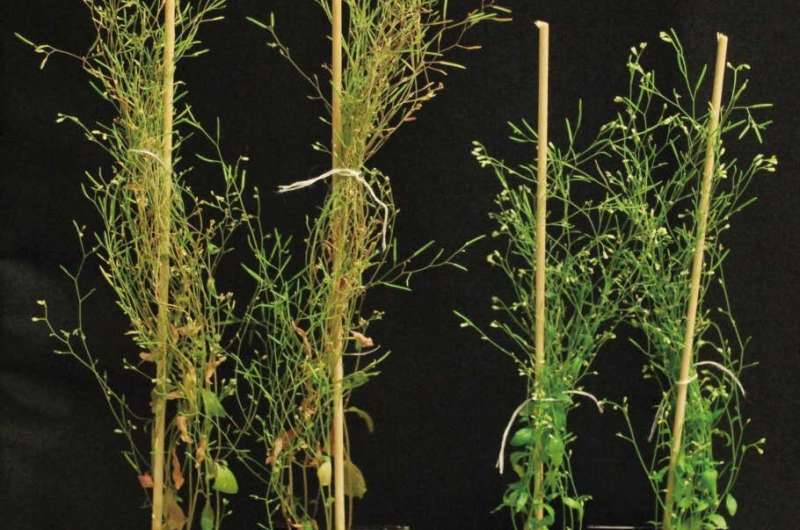Animals' mitochondria defenses discovered in plants

Mitochondria are cell organelles that play critical roles in maintaining the cell's health, or homeostasis. One way that mitochondria do this is by harvesting energy though oxidative phosphorylation, where various enzymes in the mitochondria release energy to produce the molecule ATP, the cell's "energy currency" that can be used in other processes. This is why mitochondria are often described as the cell's "powerhouse".
Most of the mitochondrial proteins are encoded by the DNA in the cell's nucleus. However, mitochondria also contain a little of their own DNA, which encodes some of their proteins as well. Because of this double origin, mitochondria are prone to proteotoxic stress: various factors that damage the production, folding, and 3D structure of mitochondrial proteins, thus affecting their function.
Mitochondria maintain the health of their proteins (or "proteostasis") through an intricate quality-control network of chaperone proteins and protease enzymes. One such example is the mitochondrial unfolded protein response (UPRmt), which describes a sequence of repairing events triggered when a mitochondrial protein becomes unfolded or misfolded, and chaperone proteins are unable to handle it.
The UPRmt essentially synchronizes a number of mitochondrial and nuclear events to ensure mitochondrial proteostasis, and is known to play key roles in metabolism and aging in mammalian cells. However, scientists have not known if it also exists in plants.
Now, Johan Auwerx and postdoctoral fellow Xu Wang in Auwerx's lab at EPFL have published a study showing for the first time that the UPRmt occurs in plants as well in response to proteotoxic stress. The scientists studied a small Eurasian plant Arabidopsis thaliana, which has been used as a model organism for studying genetics, evolution, and plant development since the early 1900's.
The researchers used doxycycline, an antibiotic that blocks gene translation in mitochondria to induce proteotoxic stress to the plant's mitochondria, and found that it activated a plant-specific UPRmt and delayed the plant cells growth as well as its biological aging (senescence). This matched previous studies reporting that UPRmt increases the lifespan of worms (C. elegans) and flies (Drosophila melanogaster).
In searching the biological signals underlie the mito-nuclear communication in the UPRmt, the researchers found a systemic hormonal response in the plant cell. The plant hormones (phytohormones) activate a signal from the nucleus to the mitochondrion to repair the stress.
"We found that plant hormone signaling is an essential mediator that regulates mitochondrial proteostasis in plants," says Johan Auwerx. "In addition, our data not only highlight the universal nature of key features of mitonuclear stress signaling pathways, such as the conserved UPRmt, but also indicate specific effectors and transcriptional circuits that are divergent between the plant and animal kingdoms."
More information: Wang X, Auwerx J. Systems phytohormone responses to mitochondrial proteotoxic stress. Molecular Cell 02 November 2017. DOI: 10.1016/j.molcel.2017.10.006
Journal information: Molecular Cell
Provided by Ecole Polytechnique Federale de Lausanne




















